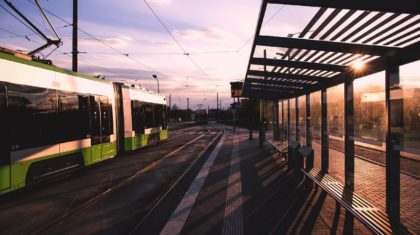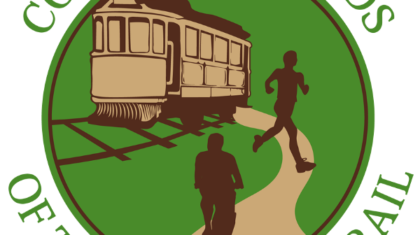
Revelations are rare in our industry. Transportation engineers are not known for being swift and bold; instead we focus on precision and consistency. As designers, we design our projects using various guidelines such as the AASHTO Green Book and Manual on Uniform Traffic Control Devices. We review local and state construction standards to develop construction documents, cost estimates, and construction specifications. When our plans are reviewed for adherence to federal, state, and local code, we get final approval to construct. Our pattern is so ingrained in the work we do that it can be hard to raise our collective heads and see what’s right in front of us. Maybe that’s why we’ve ignored the problem of race in transportation engineering for so long.

Unfortunately, while we ignore it, thousands of pedestrians of color are dying.
As an industry, we have known for decades that people of color (POC) are more likely to be killed while walking. On the roads and sidewalks that we spend countless hours designing POC are being killed by cars at rates that are 2 to 4 times higher than those of white people.[1]

Typically, our design focuses on the ability level of our users; we design to strict guidelines from the American with Disabilities Act. We devote hours of time to evaluating the needs of our disabled users, elderly users, and children. Our focus on these users assumes that we have considered the needs of the most vulnerable on our streets however we are simultaneously ignoring the impact that race has on driver behavior. It is time for us to think about how we design for neighborhoods of color. While we don’t have power to control what projects are funded, we do control what is built.
The following three points guide the thinking that it is time for transportation engineers to define what it means to address racial inequity in the design process:
1. Decades of research shows that race plays a factor in safety outcomes.
2. It is clear that people of color do not have innate “behavioral differences” that cause these higher rates of mortality.
3. Better engineering means better transportation infrastructure. Better transportation infrastructure leads to high rates of compliance, increasing safety for everyone.
Therefore, Transportation Engineers are the solution.
The issue of racial inequity in pedestrian death has been researched and documented for decades but only recently has the mainstream press reported on it. The tenor and breadth of the available research proves that previous generations of transportation professionals were aware of the problem, but either did not consider it their responsibility or were not interested in solving it.[2] It also shows that while our efforts to modify behaviors and reduce these high rates of pedestrian death have been enacted for quite some time, very little has changed.

Epitomizing the tone set by these studies, a 1992 Journal of the American Medical Association article explores the deaths of Native Americans on state roads accessing reservations in New Mexico. Native American populations in the state are mostly confined to reservations that do not serve alcohol and have virtually no pedestrian access. This study showed that Native Americans were eight times more likely to die in a pedestrian-motor vehicle crash compared with other residents of New Mexico, despite being only 11% of the population. With the title, “Pedestrian and Hypothermia Deaths Among Natives in New Mexico; Between Bar and Home,” the article details how the deaths of Native American pedestrians are caused by their off-site alcohol consumption, noting that most deaths occurred off-reservation in border towns or on the roads leading back to the reservation. The article comments on the policy that makes possession and sale of alcohol illegal on reservations and points to this law, as well as the poor behavior of the pedestrians for walking while drunk, as a potential cause of these deaths.
This idea that pedestrians of color act differently (read: “incompetently”), has been the driving force behind much of the willful ignorance of these pedestrian mortality rates. As minority populations continue to grow in the United States, sociologists are studying the details of the crashes to determine behavioral causes to these high death rates. Sociologist Huma Hamdan summarizes an analysis of literature on the topic in her article, “Racial/Ethnic Differences in Fatality Rates from Motor Vehicle Crashes: An Analysis from a Behavioral and Cultural Perspective,” by stating, “Racial/ethnic minorities exhibit higher rates of high-risk and law-breaking behavior.”[3]
Social Resistance Framework and High Fatalities of People of Color from Motor Vehicle Crashes

Specifically, POC populations do not use safety equipment, run red lights, speed, and are more likely to be intoxicated. In an effort to examine these assumptions regarding POC as pedestrians, Hamdan performed a statistical analysis of crash data in Virginia using Police Crash Reports. She found no statistically significant difference in driver and pedestrian behavior between POC and white people, “There were no differences between Whites and non-Whites in speeding, underage driving, illegal action, and being under the influence of alcohol/drugs for pedestrians and passengers.”
This long-held assumption that POC “do not understand” the infrastructure or that they are using it incorrectly and are therefore at fault for their own deaths is false and based in racially biased ideas.
Finally, research has proven that engineering upgrades to existing roadways has a profound impact on driver behaviors. The implicit bias study performed in 2014 by Drs. Kimberley Kahn and Tara Goddard entitled, “Racial Discrimination at the Crosswalk” had white and black pedestrians who were dressed the same cross at the same crosswalk. They concluded that drivers are less likely to stop for a black person than a white person and that implicit bias is exhibited in pedestrian crossings. This study established that the issue is one of altering driver behavior, a realm in which engineers are expected to perform.[4] We learn from this study that drivers react directly to the race of the pedestrian waiting at the crosswalk.

A 2017 follow up study, “Racial Bias in Drivers’ Yielding Behavior at Crosswalk: Understanding the Effect” showed that engineering has the ability to reduce the impact of implicit bias.[5] They repeated the 2014 study, but this time they ran the test before and after infrastructure improvements at an intersection, specifically the installation of signs, stop bars, and a marked crosswalk. Bias undoubtedly occurred, which is to say drivers were still more likely to stop for a white person than a black person, but the infrastructure drastically reduced the sample size of non-compliant behavior, demonstrating that the easiest solution is the most obvious. Provide better infrastructure for everyone, and everyone’s safety increases.
These points lead us to an obvious conclusion — as transportation engineers, we must bear some responsibility for the design that fails POC on our roadways. The rates of death for pedestrians of color is approaching crisis numbers and the fact that we have the information is enough for us to act on it. The excuse that this isn’t our problem or that the people who use the infrastructure are not complying is faulty. And the implicit bias studies show that when we talk about race and engineering we are working in the realm of driver behavior, which is the responsibility of transportation engineers.

The resulting question becomes, how can we as transportation engineers begin to address this issue? First, we must ask ourselves, what is the race and ethnicity of the people living in our project area? In the same way we insist on extra protections for elderly, children and disabled communities — we must think about how we add extra protections for neighborhoods of color. By simply adding our demographic data into our proposals, we can start to think about how to confront this issue. Alta has begun creating demographic maps of the neighborhoods where our engineering projects are located. This helps us understand who we are working for, what community we are serving, and how we can address additional needs. Second, we must look to our coworkers, those people who have been thinking and talking about racial equity for years, and ask them for help. Finally, we must begin having tough conversations about our design. How can we improve our work to meet the needs of communities of color? What pieces of our traffic and infrastructure are not working? We know that ¾ of pedestrian deaths happen during low-light hours and that Black and Latino pedestrians are killed at higher rates. Are we applying the existing knowledge of how to light dark skin so it’s visible at night? Or are we assuming that the code around lighting pedestrians applies to everyone equally?

According to American Society of Civil Engineers, “An engineer is expected not only to protect the public in his or her own work but also to take action if he or she has knowledge that any other person’s actions may undermine the public welfare.”[6] Because we, as engineers, know we can do something, it’s our responsibility to act. This isn’t only about innovation, it’s about responsibility to the people that we serve. We need to be bold, and not just be satisfied with merely doing our jobs. We need to design and build roads that keep all users safe and if we can’t do that, we are failing at our work. The only way transportation engineers can keep all people safe is to consider the needs of one of our most vulnerable population, our communities of color.
It is time for us to address racial inequity in the design process. How do we, as transportation engineers, apply an equity lens to the engineering process?
FOOTNOTES
[1] https://nextcity.org/pdf/dangerous-by-design-2016.pdf
[2] Here is a small sample of the available research on this topic:
● The 1987 Western Journal of Medicine article by Beth A Mueller, Frederick P. Rivara and Abraham B. Bergman, “Factors Associated With Pedestrian-Vehicle Collision Injuries and Fatalities” reports that Washington State deaths from 1981–1983 “Death rates per 100,000 population for…racial groups were 2.4 for whites, 3.8 for blacks, 5.6 for ‘other’ and 14.8 for Native Americans (including American Indian, Aleut, and Eskimo).”
● The Morbidity & Mortality Weekly Report (MMWR) for May 17, 1991, “Topics in Minority Health Pedestrian Fatalities — New Mexico 1958–1987” states “minority populations are at increased risk for pedestrian death.” https://www.cdc.gov/mmwr/preview/mmwrhtml/00001987.htm
● MMWR for July 23, 1999, “Pedestrian Fatalities — Cobb, DeKalb, Fulton and Gwinnett Counties, 1994–1998” concludes that rates of pedestrian death for black and Latino pedestrians were two and six times higher respectively than for non-Latino whites. https://www.cdc.gov/mmwr/preview/mmwrhtml/mm4828a1.htm
● National Highway Traffic Safety Administration, “Race and Ethnicity in Fatal Motor Vehicle Traffic Crashes 1999–2004” reports that for ages 16 and up the percentage of white pedestrian and bicycle fatalities was lower than that of any minority group. https://crashstats.nhtsa.dot.gov/Api/Public/ViewPublication/809956
[3] https://scholarscompass.vcu.edu/cgi/viewcontent.cgi?article=3983&context=etd
[4] https://pdxscholar.library.pdx.edu/trec_briefs/2/
[5] https://pdxscholar.library.pdx.edu/trec_reports/148/
[6] https://www.asce.org/question-of-ethics-articles/apr-2008/


